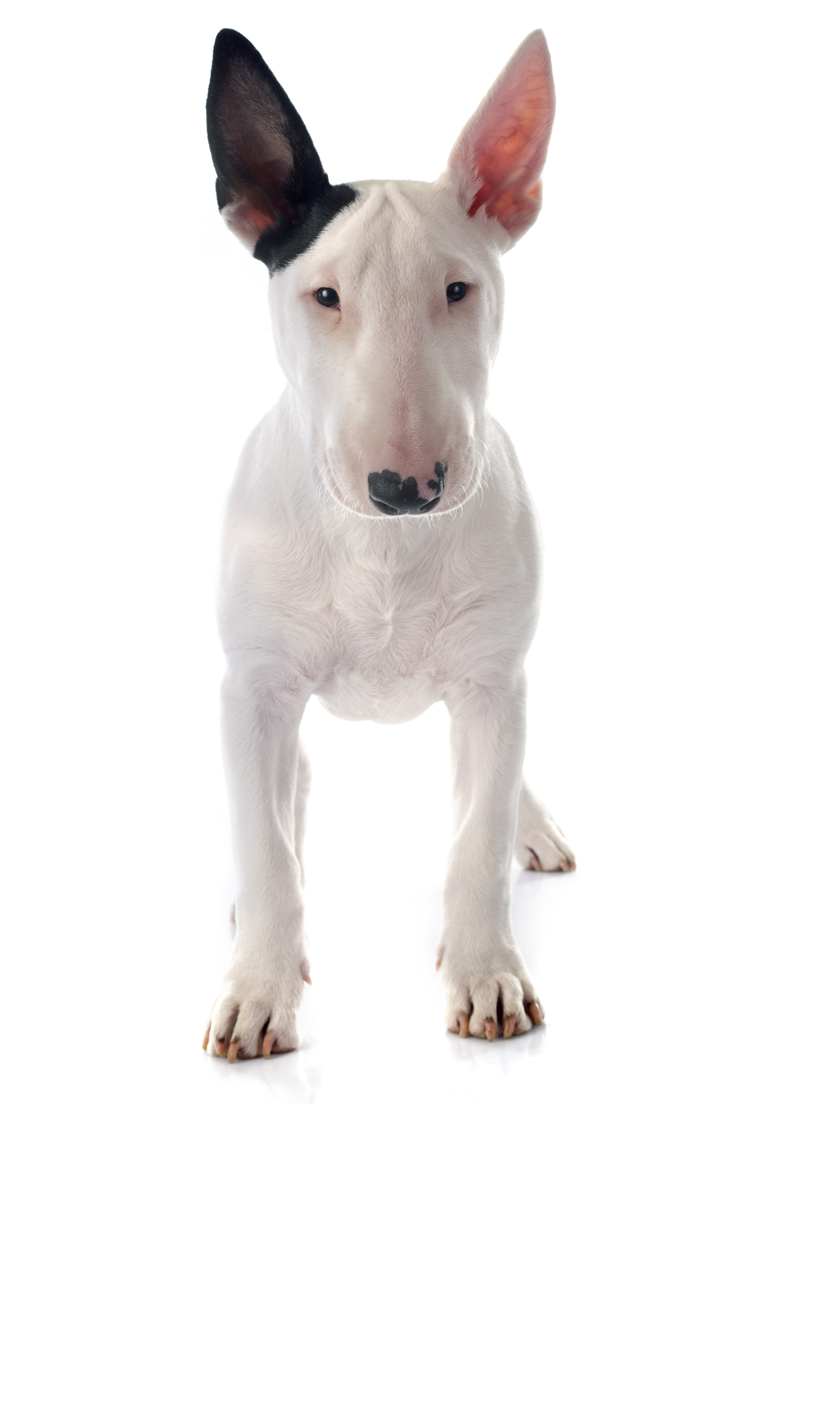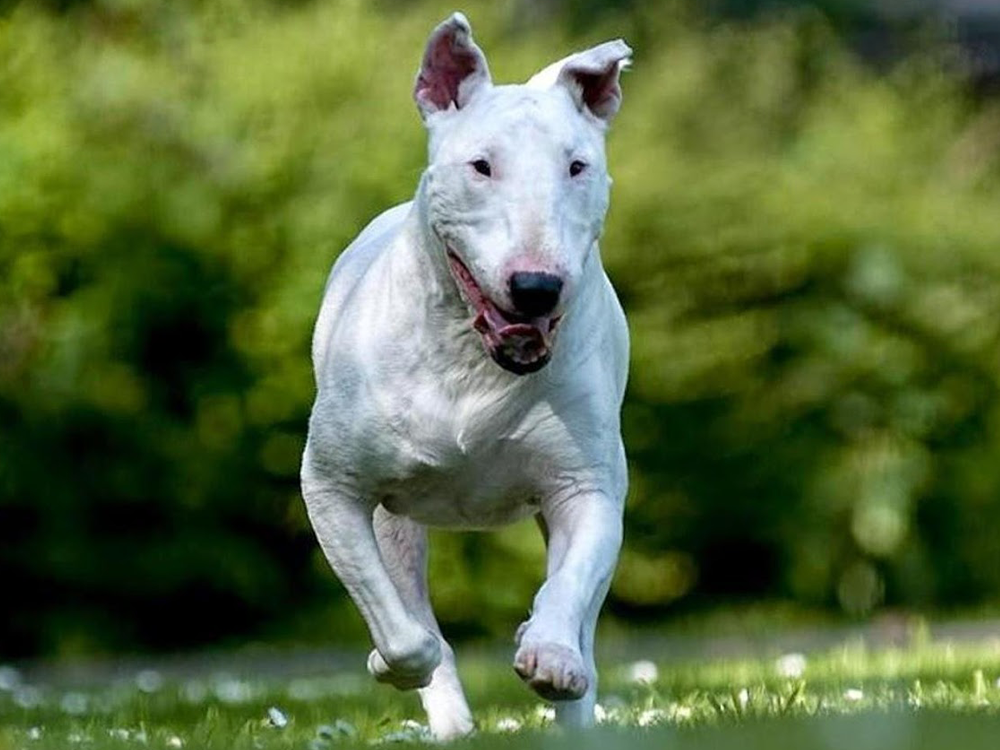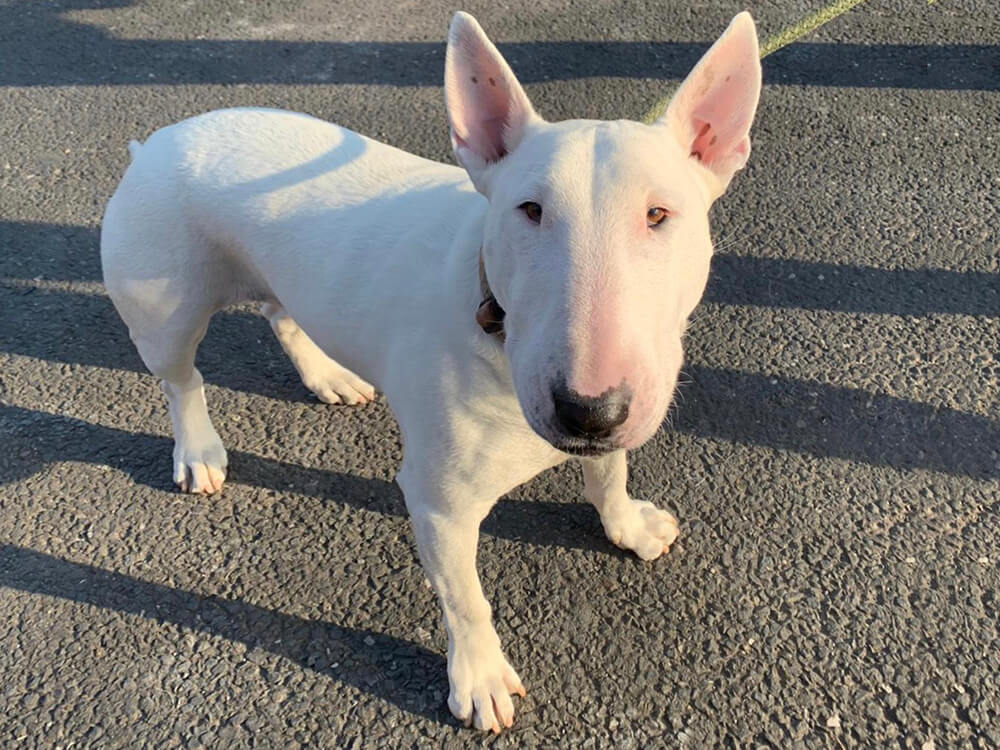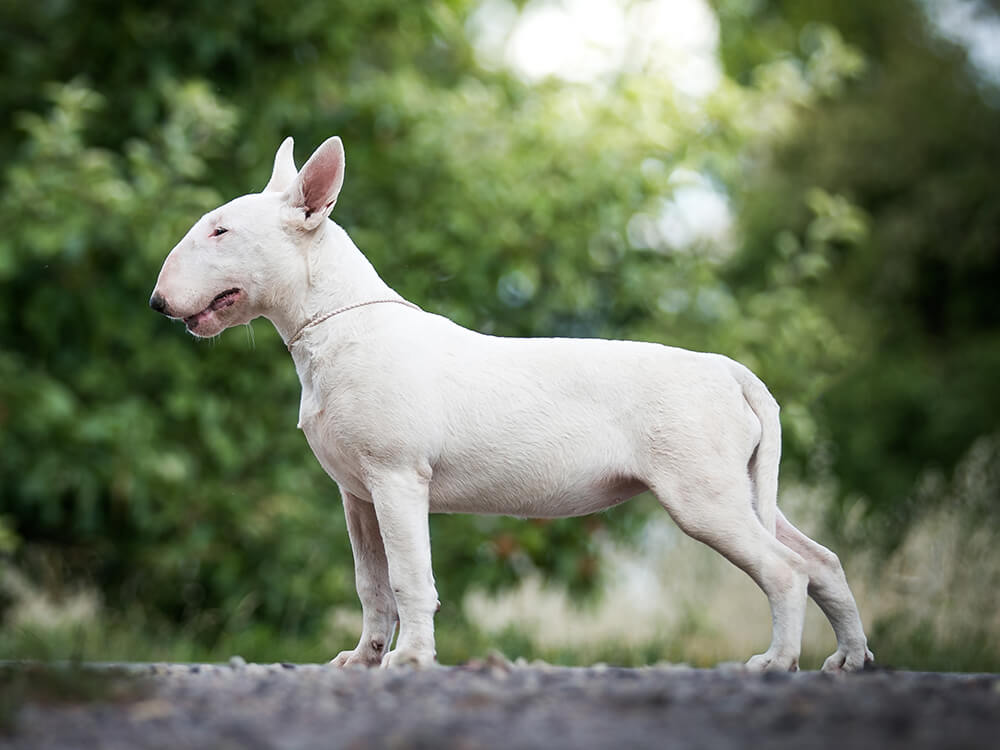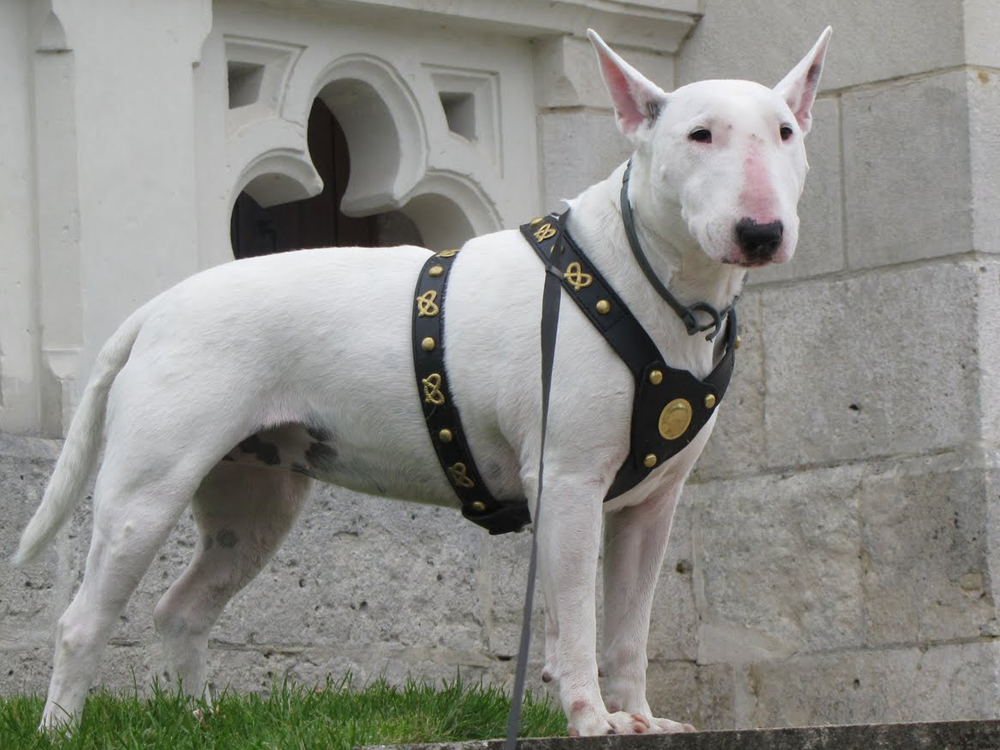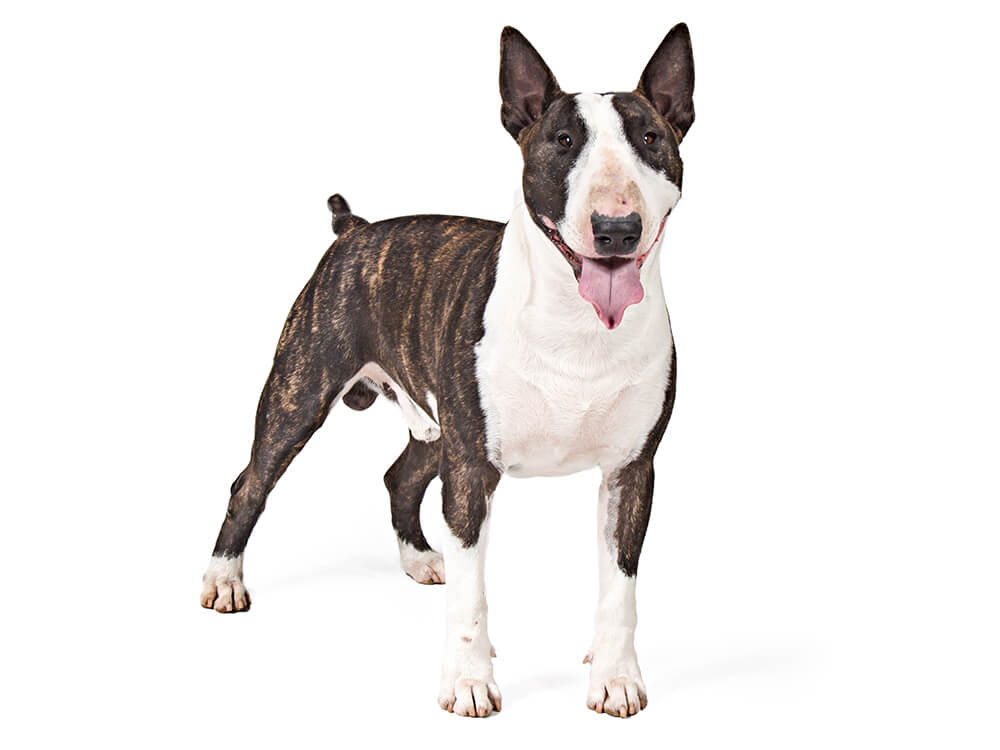
English Bull Terrier Breed Pictures
Vital Breed Stats
| Height: | 51 - 61 cm M | 51 - 61 cm F |
| Weight: | 20 - 36 kg M | 20 - 36 kg F |
| Breed Group: | Working Dog Group |
| Life Expectancy: | 11 - 14 years |
| KC Registered: | No |
Breed Characteristics
| Size: |  |
| Grooming: |  |
| Exercise Level: |  |
| Trainability: |  |
| Barking Level: |  |
| Good with Children: |  |
| Good with other pets: |  |
| Affectionate: |  |
| Protective: |  |
| Cost to Keep: |  |
Give a thumbs up if you love the English Bull Terrier

0
More About the Breed
History
The English Bull Terrier, or simply Bull Terrier, is believed to have originated in 1835, which was developed with the crossing of the English Bulldog and the now-extinct English Terrier. The resulting dogs were crossed with Spanish Pointers to increase their size and were only referred as the bull-and-terrier dogs at that time. They became fierce dog fighters in the ring yet well-mannered toward people.
In 1850, a man named James Hinks created all-white bull-and-terrier dogs referred as White Cavaliers that became popular companions of gentlemen. After selective breeding with other terrier-type dogs, a breed standard for white Bull Terriers was created and the first Bull Terrier Club was founded in 1887. During the 1900s, the coloured Bull Terriers and the white ones were accepted as one type and breed. Shortly after, miniature versions were produced. Standard and Miniature Bull Terriers are recognised by The Kennel Club as separate breeds.
Appearance
The English Bull Terrier is an easily identifiable breed because of its unique appearance highlighted by its long, egg-shaped head (when viewed by the front) and small, thin ears placed close together. Its black or dark brown, obliquely placed eyes appear narrow and triangular. It has a black nose that is bent downwards at the tips and well-developed nostrils. It has a strong, deep under-jaw and a muscular, strong neck. It has a full, round and well-muscled body. It is a medium dog that weighs 44 to 64 pounds and stands 50 to 61 centimetres.
According to KC standards, the accepted colours are (1) pure white, which can only have minimal markings on the head; and (2) coloured, which can be black, red, brindle, fawn, and tricolour.
Grooming
The Bull Terrier has a short, even and harsh yet shiny coat that is easy to groom. It also has a soft textured undercoat that grows in the winter and disappears in the hotter months. Its no-fuss coat only needs weekly brushing, which becomes more frequent during shedding season.
Grooming is a great way to have a one-on-one bonding time with your dog. The Bull Terrier’s easy-to-maintain coat should not stop you from doing so because there are other aspects that need attention such as its teeth and gums, ears, and nails. Your pet’s grooming regimen should be introduced early so it understands that these routine processes mean no harm. Most dogs feel uncomfortable when their nails are being clipped so you have to be extra careful not to cut it too short. Always have styptic powder or corn starch ready in case they bleed.
Temperament
Intelligence
Bull Terriers are intelligent dogs that are fast learners. However, they are not for first-time dog owners because of their dominant and stubborn characteristics. Early on, experienced owners should claim their alpha role and teach these dogs their place in the pack, which is below everybody in the household. Early socialisation and training are needed to establish ground rules and avoid unwanted behaviour. They need a firm yet gentle hand, as well as positive reinforcements to make trainings effective.
Bull Terriers should never be aggressive toward people but since they were used in dog fighting, they may show hostility toward other dogs of the same gender. When it comes to other pets, they do get along with those they grow up with but may consider other small animals as fair game.
Nutrition
- Senior and less active: up to 1,380 calories daily
- Typical adults: up to 1,230 calories daily
- Physically active/working dogs: up to 1,500 calories daily
Feeding
Health
Exercise
Cost of Ownership
Here is a simple expense breakdown in owning an English Bull Terrier, which will somehow help you decide if you are financially ready to own one:
- Well-bred pedigree English Bull Terrier puppy – £400 to £1,000
- Initial equipment and supply costs – £200
- Monthly food and treat expenses – £50
- Yearly routine veterinary costs (excluding major surgeries and long-term treatments) – up to £1,000
- Monthly insurance costs – basic coverage starts at £60
Is an English Bull Terrier Right for You?
- The English Bull Terrier is a calm, courageous and loyal companion.
- This dog cannot be left alone as it develops separation anxiety.
- The Bull Terrier is intelligent but can be stubborn and dominant.
- This breed needs experienced owners with a firm yet gentle hand.
- It is suitable for households with older children.
